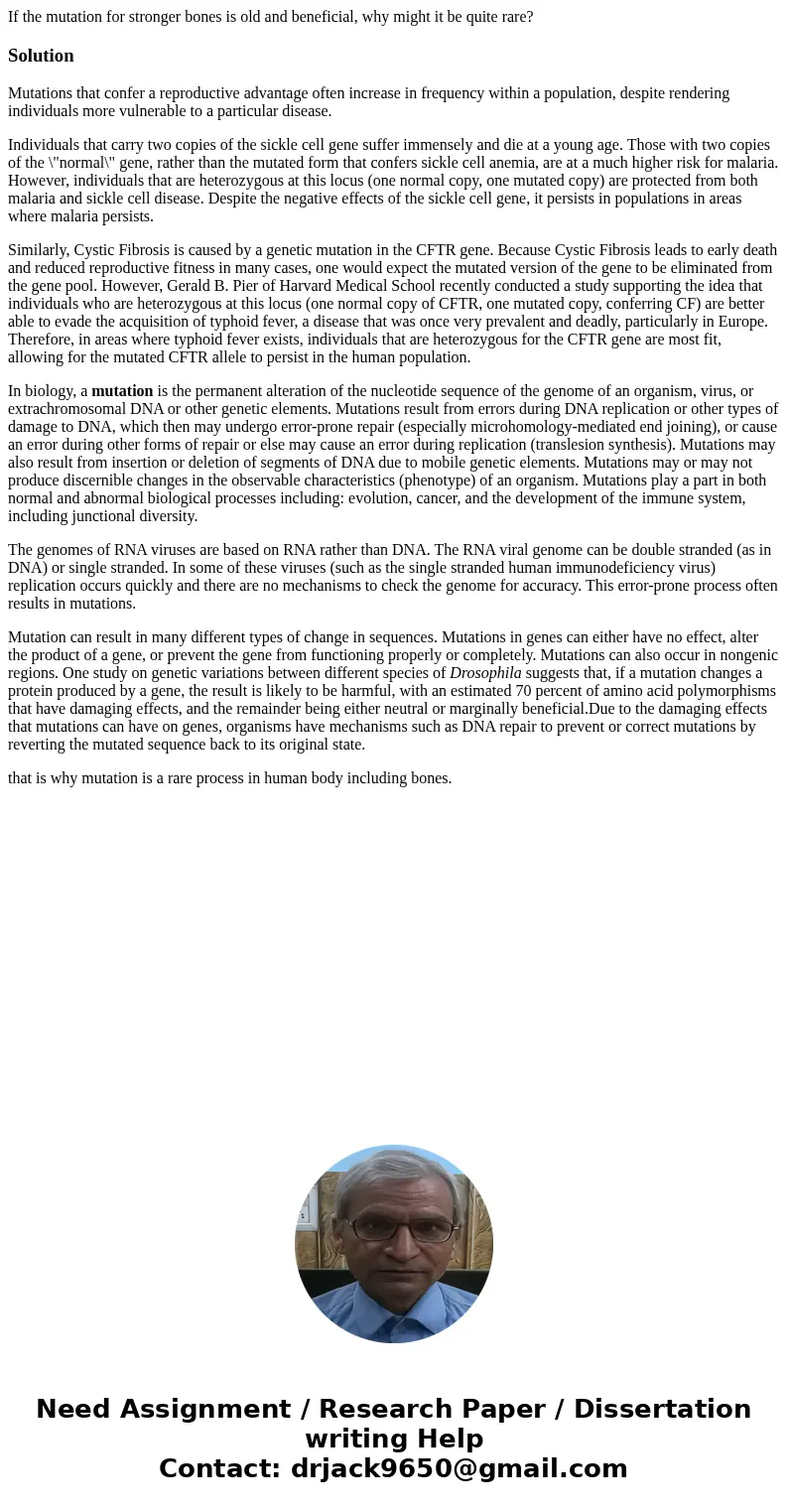If the mutation for stronger bones is old and beneficial why
If the mutation for stronger bones is old and beneficial, why might it be quite rare?
Solution
Mutations that confer a reproductive advantage often increase in frequency within a population, despite rendering individuals more vulnerable to a particular disease.
Individuals that carry two copies of the sickle cell gene suffer immensely and die at a young age. Those with two copies of the \"normal\" gene, rather than the mutated form that confers sickle cell anemia, are at a much higher risk for malaria. However, individuals that are heterozygous at this locus (one normal copy, one mutated copy) are protected from both malaria and sickle cell disease. Despite the negative effects of the sickle cell gene, it persists in populations in areas where malaria persists.
Similarly, Cystic Fibrosis is caused by a genetic mutation in the CFTR gene. Because Cystic Fibrosis leads to early death and reduced reproductive fitness in many cases, one would expect the mutated version of the gene to be eliminated from the gene pool. However, Gerald B. Pier of Harvard Medical School recently conducted a study supporting the idea that individuals who are heterozygous at this locus (one normal copy of CFTR, one mutated copy, conferring CF) are better able to evade the acquisition of typhoid fever, a disease that was once very prevalent and deadly, particularly in Europe. Therefore, in areas where typhoid fever exists, individuals that are heterozygous for the CFTR gene are most fit, allowing for the mutated CFTR allele to persist in the human population.
In biology, a mutation is the permanent alteration of the nucleotide sequence of the genome of an organism, virus, or extrachromosomal DNA or other genetic elements. Mutations result from errors during DNA replication or other types of damage to DNA, which then may undergo error-prone repair (especially microhomology-mediated end joining), or cause an error during other forms of repair or else may cause an error during replication (translesion synthesis). Mutations may also result from insertion or deletion of segments of DNA due to mobile genetic elements. Mutations may or may not produce discernible changes in the observable characteristics (phenotype) of an organism. Mutations play a part in both normal and abnormal biological processes including: evolution, cancer, and the development of the immune system, including junctional diversity.
The genomes of RNA viruses are based on RNA rather than DNA. The RNA viral genome can be double stranded (as in DNA) or single stranded. In some of these viruses (such as the single stranded human immunodeficiency virus) replication occurs quickly and there are no mechanisms to check the genome for accuracy. This error-prone process often results in mutations.
Mutation can result in many different types of change in sequences. Mutations in genes can either have no effect, alter the product of a gene, or prevent the gene from functioning properly or completely. Mutations can also occur in nongenic regions. One study on genetic variations between different species of Drosophila suggests that, if a mutation changes a protein produced by a gene, the result is likely to be harmful, with an estimated 70 percent of amino acid polymorphisms that have damaging effects, and the remainder being either neutral or marginally beneficial.Due to the damaging effects that mutations can have on genes, organisms have mechanisms such as DNA repair to prevent or correct mutations by reverting the mutated sequence back to its original state.
that is why mutation is a rare process in human body including bones.

 Homework Sourse
Homework Sourse